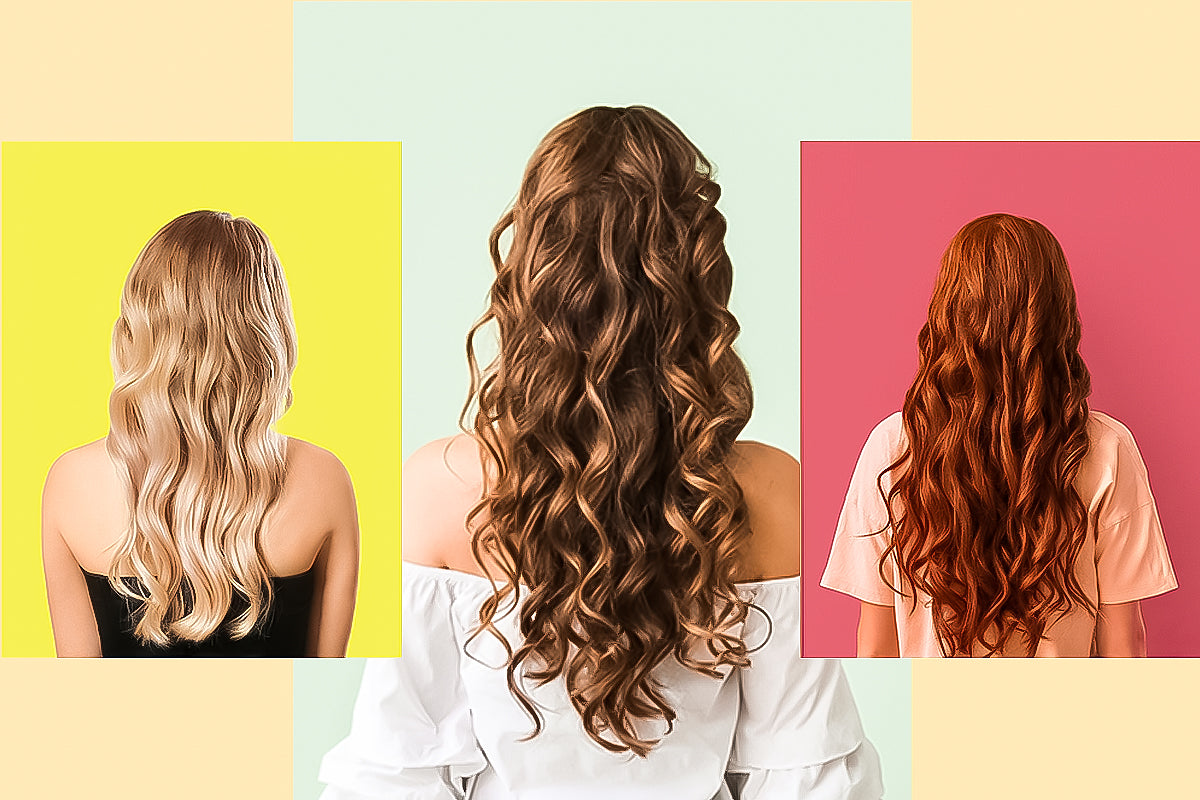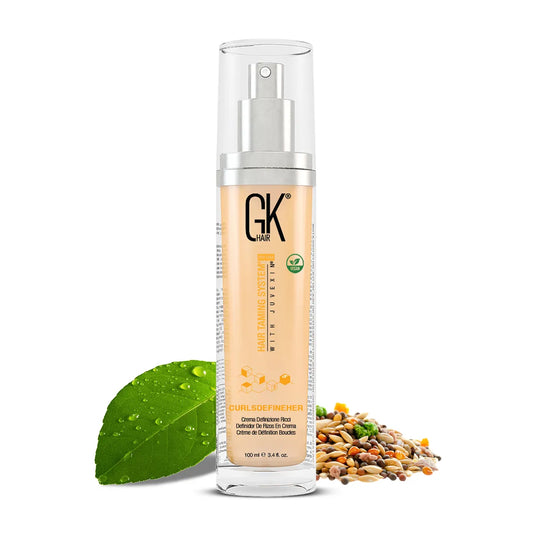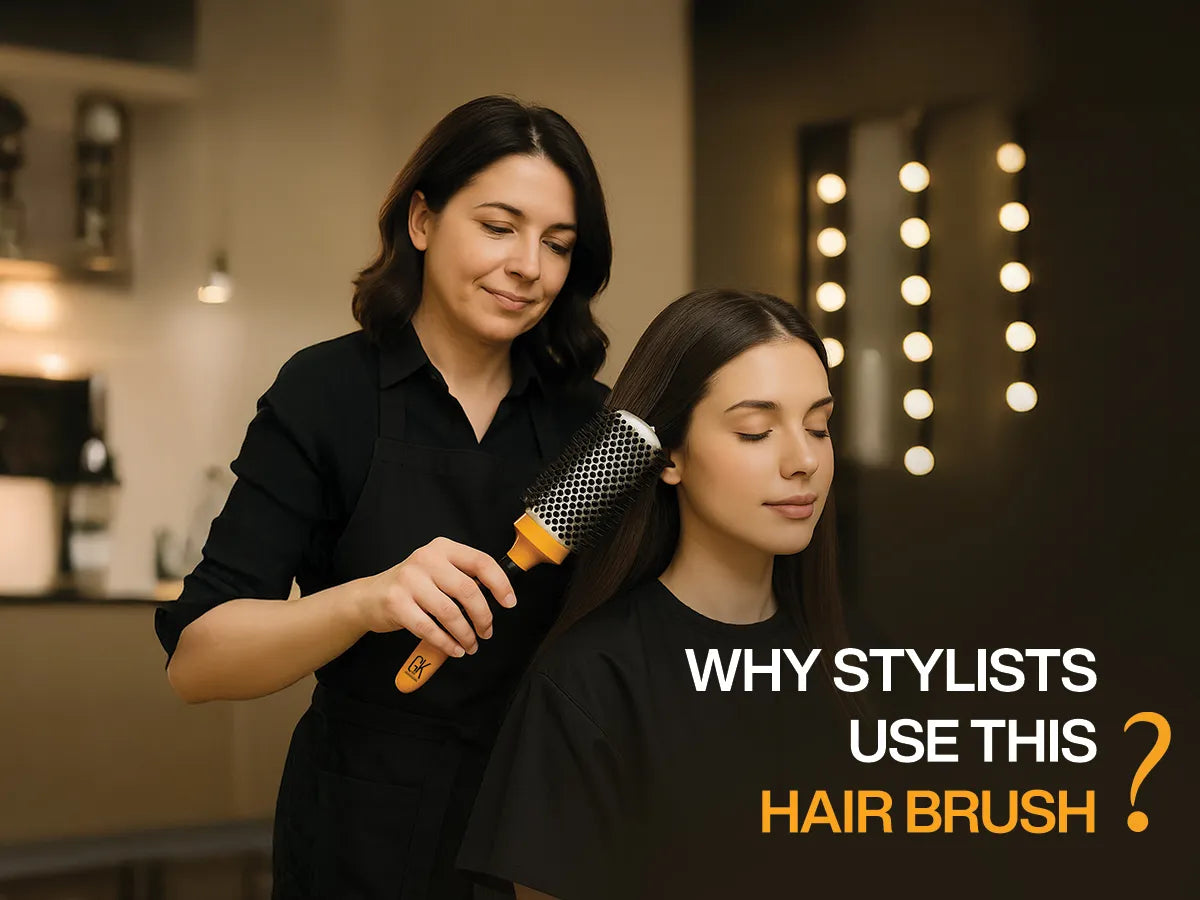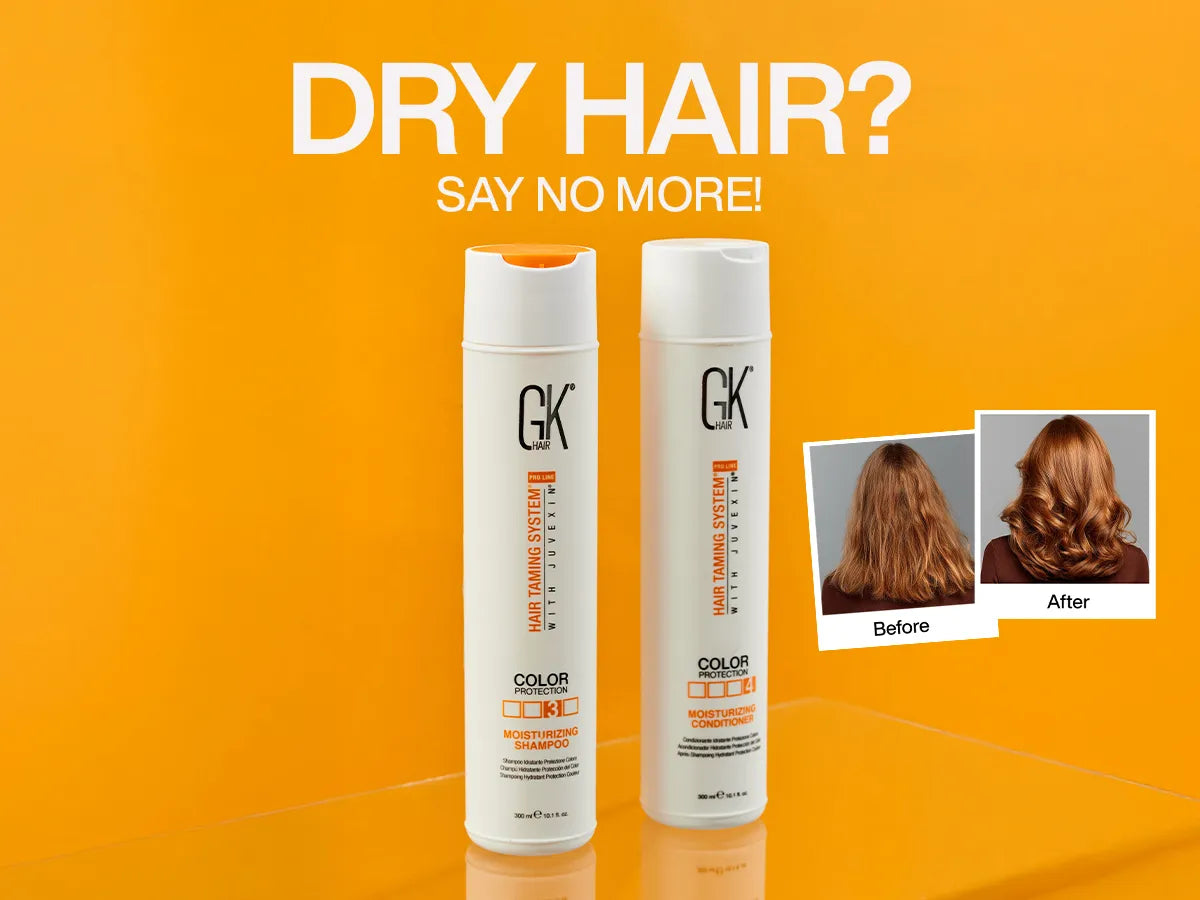Imagine waking up to blow-out level waves without ever touching a curling iron. It is possible. You can achieve those dreamy curls, without losing your hair's natural oils, by using flexi-rods, ribbons, or braids. But, before we get into all that, let's find out what heatless curls mean.
How Do Heatless Curls Work?
Heatless curls are simply curls created by setting damp or styled hair in a curled shape and letting it dry (without heat). But how exactly does it work? When you wet your hair (with water or moisturizing products), some of the bonds that hold your hair together become temporarily weak, allowing it to reshape. As your hair dries in the new shape, those bonds reform and 'lock in' the curl.
Starting heatless methods with damp hair gives the best hold. Wet hair is fragile, and allowing it to air-dry makes it mold without tension. While traditional heat tools use high temperatures to remove moisture and force a new shape, heatless curling takes advantage of the nature of the bonds in the hair.
Benefits of Going Heat-Free
The most significant benefit of going heatless is zero heat damage. Using hot tools often results in protein loss, breakage, and split ends. Heat styling also leaves your hair drier than the surrounding air, making it prone to frizz. Heatless styling prevents all that, so your hair stays healthier over time.
Most heatless methods use items you already have or inexpensive tools. You're also using far less energy and electricity. So, you're saving money and energy which is a win for your hair and your pocket.
Are you concerned about heat-damaged hair? Read more about Heat-Damaged Hair: Causes, Treatment & Prevention.
Best Hair Types for Heatless Curls
Heatless methods can work on almost any hair, but some factors can affect their effectiveness.
Fine Hair vs. Thick Hair
Fine, straight hair typically holds curls poorly. So, consider using smaller curlers (like thin flexi rods or small braids), and apply a mousse to give your hair strands some grip. Thick hair, on the other hand, holds curls easily, but it requires larger rollers or thicker braids. It also requires more time to dry.
Straight, Wavy, and Curly Hair
Straight hair can be tricky to curl without heat. But with a good styling product and tight wrapping, you can still get those bouncy curls. For naturally wavy hair, heatless curling just enhances and defines your existing patterns. For curling hair, these methods can refresh or reshape the curls without damage.
Porosity
Hair porosity impacts the curl setting. Low-porosity hair is slow to absorb water and product, so you should spend more time dampening it. However, once it sets in shape, it often holds well.
In contrast, high-porosity hair absorbs and loses moisture very quickly. High-porosity hair might dry rapidly in a curl set, but it can also frizz or flatten quickly. In summary, medium porosity is easiest (hold-wise). Low porosity requires patience in preparation, and high porosity requires extra moisturizing products.
Top 9 Heatless Curl Methods (Step-By-Step Guide)
Here are nine of the most popular heat-free curling techniques. We have included simple steps for each. Before starting any, lightly detangle your damp hair and apply a small amount of GK Hair’s Styling Mousse to hold the shape.

Flexi Rods
These are soft, bendable foam rods. To use them, take small sections of your hair and wrap each around a rod from the ends up to the root. Bend the ends of the rod to lock it in place. Sleep on the rods (or leave them in for several hours) until your hair is dry, then unbend and remove the rods.
Tip: Smaller rods = tighter curls and larger rods = looser waves.
Foam Rollers
These are similar to flexi rods, but typically larger and often come with built-in clips. Wrap your damp hair around the foam roller, starting at the ends and rolling up to your scalp. Use the clip to hold it. Let hair dry thoroughly, then unroll. Foam rollers give more volume than flexi rods.
Satin Ribbons
Satin curlers come as long tubes of ribbon. Place the ribbon on your head like a headband and wrap sections of your hair around it tightly, working from roots to tips. Knot the ends to secure the wrapped hair. Sleep on it and gently loosen the ribbons after your hair is dry. The result is glossy, elongated curls.
Sock Curls
You can use ordinary long socks for this. Wrap your hair around the socks just like a rod. Knot the sock ends to secure the curls. After your hair dries, loosen the knot, and you have your curls ready.
Velcro Rollers
To use hair rollers with velcro grip, simply roll slightly damp hair sections around the rollers and leave them in. Since they stick to the hair, you often do not need clips. For best results, start near your scalp and roll down to the ends. After the hair is set, unroll and gently shake out your waves.
Paper Towels
Cut paper towels into strips (a couple of inches wide). Place a strip under a small section of hair near the ends. Then, wrap your hair around the towel. Roll it up toward your scalp, and continue wrapping your hair around it. When you reach the top, tie the two ends of the paper towel into a knot to secure the curls. Repeat this step with all other sections of your hair. In the morning, simply unroll and remove each strip.
Twist and Pin
Divide damp hair into sections. Take one section, twist it tightly from the root to the tip, then coil it into a circular 'bun' shape against your head. Pin the twist in place with a bobby pin. Do this for all the other sections of your hair. Leave the twists overnight until they're fully dry. Then take the pins out. You'll have lovely spiral curls.
Braiding
There are many braid styles to create waves. You can braid your hair into one or two French or Dutch braids. The tighter the braid, the tighter the wave pattern. Alternatively, you can make many small three-strand braids all over your head. In this case, the more the braids, the tighter the wave. Keep the braid till morning and then undo it.
Finger Curls
Take a small strand of your hair and wrap it around your finger. Then secure it flat against your scalp with a bobby pin or hair clip. Continue like that until you have pinned all your hair. Let your hair dry completely and remove pins. You will have defined pin curls that can last for days.
How to Make Heatless Curls Last
-
Start with clean or lightly styled hair. You can wash with curly hair shampoo.
-
Apply GK Hair’s Moisturizing Conditioner to make your strands soft and detangled.
-
Divide your hair evenly for better curl distribution and size. Typically, the smaller your sections, the tighter your curls.
-
Apply a mousse to your hair (while it is still damp) for better hold.
-
Maintain consistent tension when wrapping your hair. Keep it firm enough to get the curls, but not so tight that it causes breakage.
-
Secure the ends of your curls properly so they do not come loose while you are sleeping.
-
Give the curls at least 5 hours to form. Leaving them overnight is the ideal duration though.
-
Avoid brushing/combing the curls immediately after removal to preserve your curl patterns.
-
Apply hairspray after removal to lock in the curls. We recommend GK Hair’s CurlsDefineHer.
Final Thoughts
The biggest takeaways are: start with slightly damped hair, wrap around some curlers, and give those curls time to set and dry.
Decide which one of them you'll be trying, and feel free also to mix and match different methods. It may do the trick for you. Enjoy your damage-free heatless waves!















Leave a comment